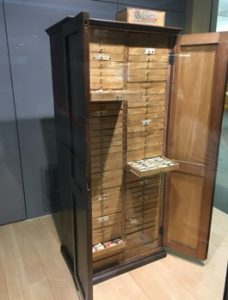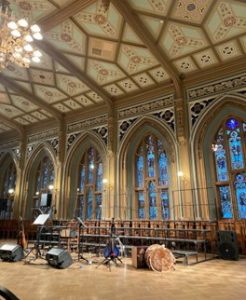Text and photos by Hannah Huber, University of Helsinki
Music plays a central, yet often-overlooked role in fostering resilient communities by influencing culture, language, and even political participation. A strong example of this is in the “singing revolutions” leading up to the fall of the Soviet Union that swept across Estonia, Latvia, and Lithuania in the late 1980s.
In each of these cases, each nation’s musical heritage was a unifying element in building resilient societies that were determined to endure the difficulties of the time and push forward into a brighter future.
However, in an ever-globalizing world filled with international conflicts that threaten to eradicate cultural singularities and undermine the resiliency of smaller states, there is a pressing need to better understand the role musical traditions play and utilize them as a tool in safeguarding culturally vibrant and socially resilient communities.
During a recent excursion to Latvia, I witnessed two active examples of how music can be preserved, protected, and utilized to create a resilient society, be it on a state, community, or individual level. The first example is Latvia’s careful preservation efforts of musical heritage. The National Library of Latvia displays a “Cabinet of Folk Songs,” which holds a meticulously-gathered collection of 268,815 scripts of songs culturally significant to the Latvian people. This collection represents the long-term resiliency of culture that has persevered, despite decades of occupations, conflicts, and calamities. However, without the concentrated efforts of Latvian researchers and anthropologists, this vast treasure of Latvian culture and identity may have been lost in a forgotten past. The active preservation and research of these records allow the Latvian people to reconnect with this historical tradition providing Latvia with an important national narrative and identity that can continue to endure for decades to come.

My second example demonstrates Latvians’ active participation in this musical heritage, as well as their further expansion upon it. On a quiet Sunday night in Riga, I attended a concert in the stained glass encased main hall of the beautifully preserved “Maza Gilde” where the choir “Sigunigunikam” performed both a collection of culturally significant folk songs, as well as new patriotic pieces recently composed by Latvian musicians. The choir, accompanied by two solo guitarists and directed by the conductor and cultural researcher Andrejs Mūrnieks, presented a moving performance centered on a celebration of cultural heritage.
Although I did not understand the words of what was sung or spoken, it was clear through the tears in the eyes of both the singers and the audience members who joined in singing several songs, that music was not only a significant part of Latvia’s past, but also the nation’s present and future.
This experience exemplifies how a culture and society actively grows, evolves, and builds upon its traditions, strengthening its potential for a culturally resilient future.

These two cases demonstrate how music can reinforce the resiliency of a people and nation. As conflicts and international actors continue to threaten the longevity of cultures and histories around the world, it is crucial we all take a page from Latvia’s songbook and actively seek ways to preserve and participate in the continuation of our unique cultural heritage.
- This blog is a part of a blog series written by the BAMSE Riga intensive course students. The blog series analyses the concept of resilience from five different viewpoints: democracy in crises, regional responses, social consequences, relevance of history politics and cultural approaches. This blog belongs to the cultural approaches to resilience part of the blog series. Read more about the blog series on Bamse News & Events website.
